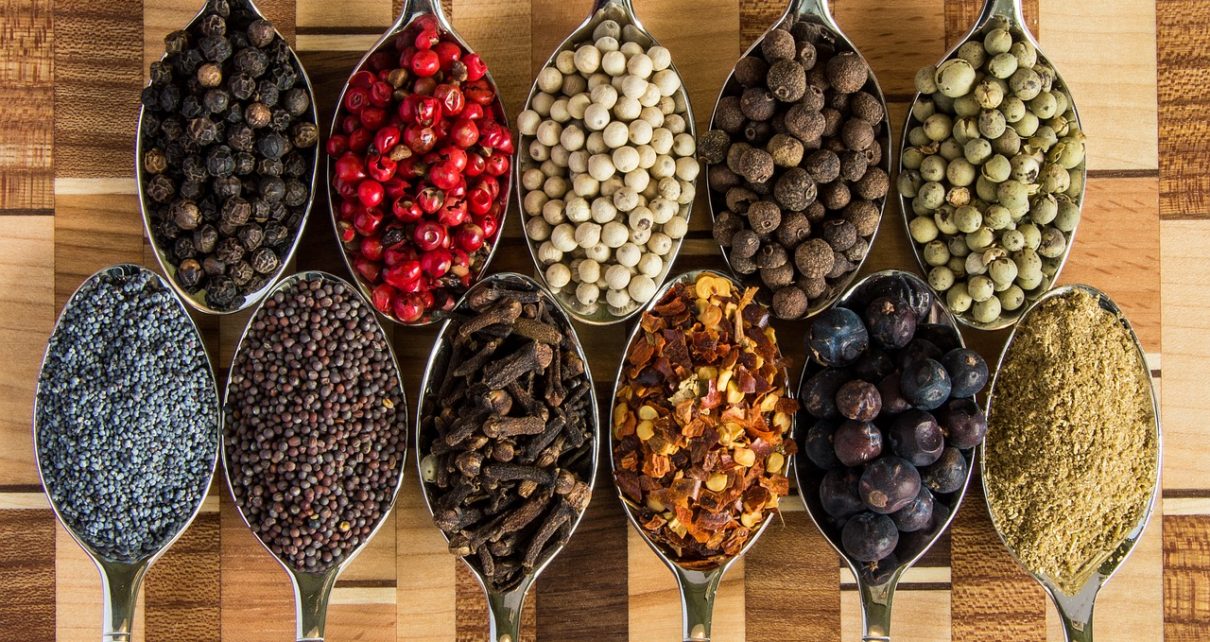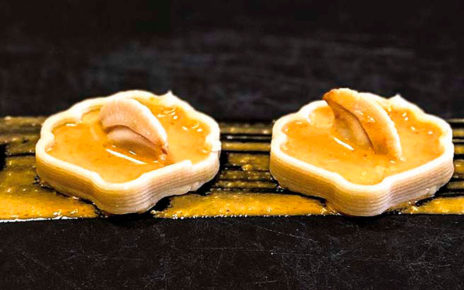A blend of basil, bay leaf, black pepper, cinnamon, coriander, cumin, ginger, oregano, parsley, red pepper, rosemary, thyme and turmeric were used.
A new study conducted at Penn State suggests that adding an array of spices to a meal may help reduce inflammation, based on the results of a randomized, controlled study.
Participants ate three different versions of a meal high in fat and carbohydrates. One meal contained six grams of a blend of spices, while the second meal had little spices, and the third had no spices. It was found that the high-spice group exhibited lower inflammation biomarkers compared to the other two groups.
“If spices are more palatable to you, they might be a way to make a high-fat or high-carb meal more healthful,” Connie Rogers, an associate professor of nutritional sciences at Penn State said. “We can’t say from this study if it was one spice in particular, but this specific blend seemed to be beneficial.”
Chronic inflammation is associated with a variety of health issues including cancer, cardiovascular disease, overweight and obesity, which together affect approximately 72% of the U.S. population. The spices used in the study were a blend of basil, bay leaf, black pepper, cinnamon, coriander, cumin, ginger, oregano, parsley, red pepper, rosemary, thyme, and turmeric.
In more recent years, researchers have found that inflammation can spike after a person eats a meal high in fat or sugar. While it is not clear whether these short bursts, dubbed acute inflammation, can cause chronic inflammation, Rogers said that it’s suspected they play a factor, especially in overweight or obese people.
“Ultimately, the gold standard would be to get people eating more healthfully and to lose weight and exercise, but those behavioral changes are difficult and take time,” Rogers said. “So in the interim, we wanted to explore whether a combination of spices that people are already familiar with and could fit in a single meal could have a positive effect.”
For this study, a group of 12 men between the ages of 40 and 65 who were overweight or obese were recruited, each of whom had at least one risk factor for cardiovascular disease. Rogers said the sample was chosen because people in these demographics tend to be at a higher risk for developing poorer health outcomes.
In random order, each participant at three versions of a meal high in saturated fat and carbohydrates on three separate days, one with no spices, one with two grams of the spice blend, and one with six grams of spices. The researchers drew blood samples before and hten after each meal hourly for for hours to measure inflammatory markers.
“Additionally, we cultured the white blood cells and stimulated them to get the cells to respond to an inflammatory stimulus, similar to what would happen while your body is fighting an infection,” Rogers said. “We think that’s important because it’s representative of what would happen in the body. Cells would encounter a pathogen and produce inflammatory cytokines.”
Rogers said that six grams of spices roughly translated to between one teaspoon to one tablespoon depending on how the spices were dehydrated.
While researchers can’t be sure which spice or spices are contributing to the effect, or the precise mechanism in which the effect is created, Rogers said the results suggest that the spices have anti-inflammatory properties that help offset inflammation caused by the high-carb and high-fat meal.
Additionally, Rogers said that a second study using the same subjects, conducted by Penn State researchers Penny Kris-Etherton and Kristina Petersen, found that six grams of spices resulted in a smaller post-meal reduction of “flow mediated dilation” in the blood vessels, a measure of blood vessel flexibility and marker of blood vessel health.
In the future, Rogers said she, Kris-Etherton and Petersen will be working on further studies to determine the affects of spices in the diet across longer periods of time and within a more diverse population.
Ester S. Oh, a graduate student in nutritional spices, Petersen, and Kris-Etherton also participated in this work.
Source: Nutraceuticals World










